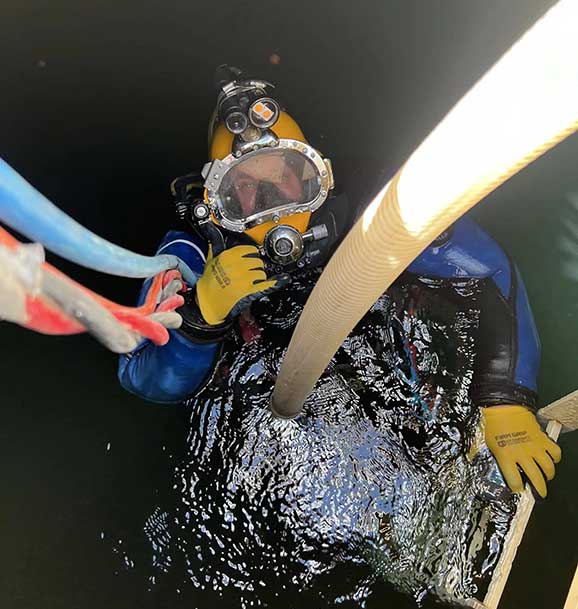From Surface to Depth: The Evolution of Diver Communication Systems
Effective communication is at the heart of safe and efficient commercial diving operations. Over the years, diver communication systems have evolved from simple hand signals to sophisticated audio and digital solutions, enabling real-time interaction between divers and surface teams.
Early Communication Methods
In the early days of commercial diving, divers relied on pre-agreed hand signals and rope tugs to convey simple messages. While functional, these methods were limited in scope, often leading to miscommunication and increasing operational risks, especially during complex underwater tasks.
Introduction of Hard-Wired Systems
Hard-wired communication systems marked the first major advancement. Using underwater cables, divers could transmit voice communication to surface operators, significantly improving coordination and safety. These systems allowed for more detailed instructions, monitoring of diver status, and immediate responses to emergencies, reducing the chances of accidents in hazardous environments.
Wireless and Digital Advancements
Modern diver communication systems now incorporate wireless and digital technologies. Using advanced transmitters, receivers, and encrypted channels, these systems enable clear, reliable communication even at considerable depths. Features such as multiple diver channels, selective muting, and integrated recording enhance operational control and provide valuable documentation for safety audits and project reviews.
Integration with Other Underwater Equipment
Contemporary communication systems are often integrated with video and monitoring equipment, creating a comprehensive operational hub. Surface teams can receive both audio and visual feedback in real-time, improving decision-making and operational efficiency. This integration is especially valuable in commercial projects where multiple divers operate simultaneously in challenging conditions.
Reliability in Harsh Environments
Diver communication systems are designed to withstand extreme underwater conditions, including high pressure, low temperatures, and strong currents. Durable housings, waterproofing, and long-lasting batteries ensure continuous operation, providing divers and surface teams with a reliable link throughout the mission.
Conclusion
The evolution of diver communication systems highlights the industry’s commitment to safety, efficiency, and innovation. From hand signals to fully integrated digital systems, modern communication tools empower divers to perform complex tasks confidently while keeping surface teams informed. Investing in advanced communication technology is essential for any commercial diving operation that prioritizes safety, accuracy, and seamless coordination.
